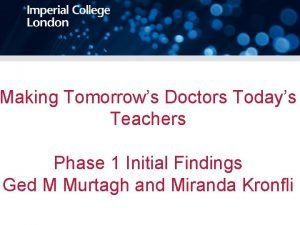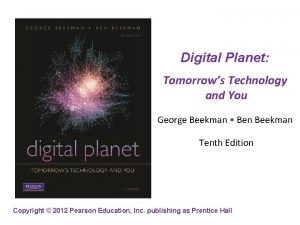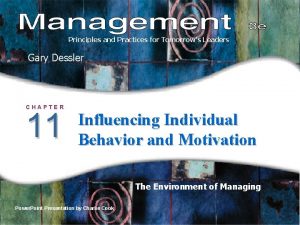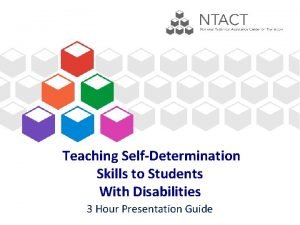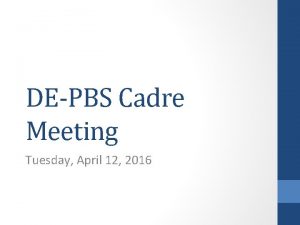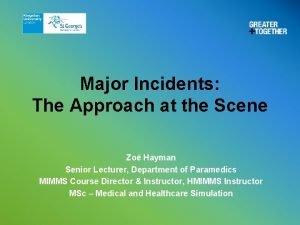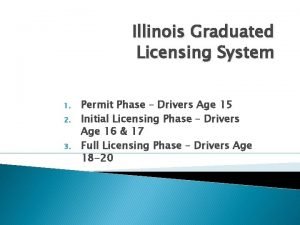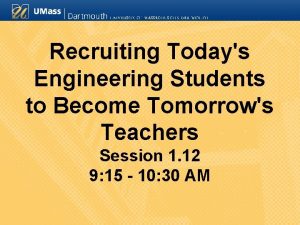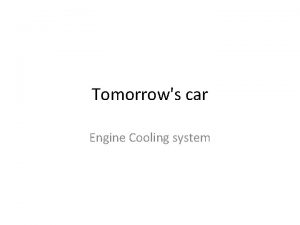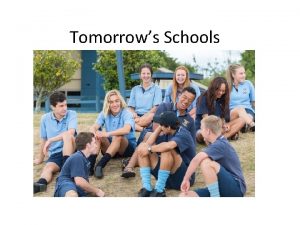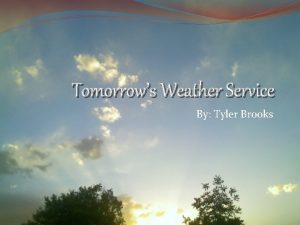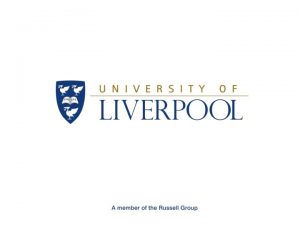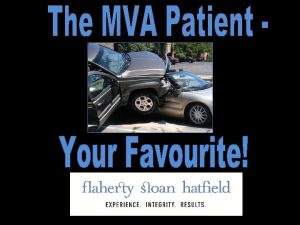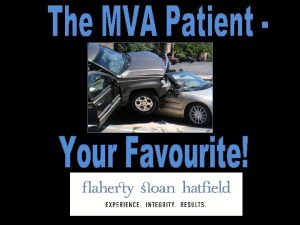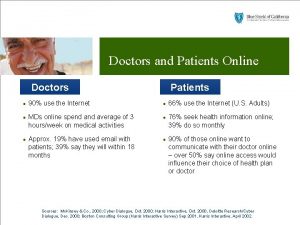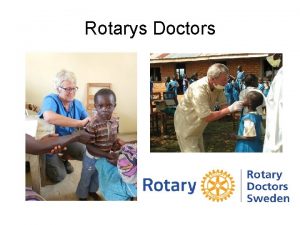Making Tomorrows Doctors Todays Teachers Phase 1 Initial















- Slides: 15

Making Tomorrow’s Doctors Today’s Teachers Phase 1 Initial Findings Ged M Murtagh and Miranda Kronfli

Background – Project Impetus • Teaching is developed typically by academic staff according to curriculum requirements and student feedback. • However, student feedback mechanisms do not always adequately capture the student’s experience and their actual engagement with the subject. • This project aims to reverse this process to illustrate ‘participation as social practice’ (Lave and Wenger 1991) so that actual student experience becomes one of the drivers of teaching and learning.

The clinical attachment – the wider context of student learning

Student Partnership Learning – authenticity, inclusivity, reciprocity • Secure students as partners in learning • Directly involve students early on as key stakeholders and decision makers in their own teaching and learning allows them to translate their knowledge into the teaching and learning domain. • The idea is to create microcosms of learning to encourages students’ lateral thinking about the subject area.

Evaluation • Broad Research Questions • What does student partnership mean for students? • In what ways can a partnership model assist with undergraduate medical training? • How does learning take place within this partnership model? • Motivation to learn • Does a partnership approach shape/influence student identity?

The underlying principle “Only where students are given a significant amount of autonomy, independence, and choice can this be considered partnership…. The more autonomy students have in these activities, the more likely they are to experience partnership”. (Healey et al 2016)

What did we do? • Recruited 18 students to work together in small groups to put together a full teaching session based on their experiences/perceptions of learning need. • Each member of each group involved in specific tasks e. g. designing the format of the session (interactive vs didactic), aligning the session with core curriculum etc. • Simulation (not critical) to provide a useful modelling tool for students. Should focus on communication. • Support Workshops - Tutors, academic staff. • Focus groups – pre and post questionnaires

What did the students do? Identify learning need Select session focus Create learning outcomes Plan teaching session Rehearse teaching session Deliver and evaluate teaching session • Students explored gaps in their clinical placement learning, supported with a facilitated discussion • Students formed groups and decided on a session focus, based in their clinical experience • The four groups of students identified learning outcomes and session content for their sessions • Groups developed content & designed sessions over 3 months • Support from 1 actor consultation and 2 tutor meetings • Students rehearsed and revised their teaching sessions • Students recruited peer learners to attend the sessions • The four groups of students delivered their teaching sessions to peer learners from their own year

What did we find (Initial analysis) Key themes to emerge: • Students sense of ownership took over as the driving force • Learners’ input should exist as a dialogue between learner and educator (collaborative). • The need to tailor learning opportunities to learners’ needs, and for learners to have a say in how this is done. • Learners to be directly involved in teaching and learning processes to facilitate a level playing field for discussions • Feedback could be key

What did we find (cont’d) • A notable shift in students’ perspectives on the meaning of student partnerships from ‘learner’ to ‘educator’/’facilitator’ (FG 1 – FG 2) • Anecdotally, this seemed to indicate a shift in how they saw themselves, and their role.

Pre and post Q – initial analysis I have ownership of my teaching and learning* I am a decision-maker when it comes to teaching and learning* Being involved in the project has been of value for my professional development as an educator How motivated do you feel about teaching others? Percentage responding Agree/ Strongly Agree (Likert Score 4 or 5) 11/16 (69%) 14/15 (93%) Percentage Responding Strongly Agree (Likert Score 5) 0/16 (0%) 6/15 (40%) Percentage responding Agree/ Strongly Agree (Likert Score 4 or 5) 12/16 (75%) 14/15 (93%) Percentage Responding Strongly Agree (Likert Score 5) 0/16 (0%) 5/15 (33%) Percentage responding Agree or Strongly Agree (Likert Score 4 or 5) - 15/15 (100%) Percentage Responding Strongly Agree (Likert Score 5) - 11/15 (73%) Percentage responding Motivated – Extremely Motivated (Likert Score 3 - 5) 16/16 (100%) 15/15 (100%) Percentage Responding Extremely Motivated (Likert Score 5) 3/16 (19%) 7/15 (47%)

Pre and post Q – initial analysis How confident would you say you are about designing and delivering a teaching session? Percentage responding Confident – Completely Confident (Likert 3 -5) 7/16 (44%) 15/15 (100%) Percentage Responding Completely Confident (Likert Score 5) 0/16 (0%) 1/15 (7%)

Can we model partnership? It’s still early days • Student Partnership – Ownership of learning drives motivation to learn and forges partnership » Provides space for creativity • There needs to be a basis for collaborative dialogue (peer to peer/peer to ‘facilitator’) • Learner’s active input is central – Empowering learners • Identifying curriculum gaps and learning needs

Quotes “Because it makes them engage, like genuinely engage. To be able to talk back and say ‘No that’s wrong’ it does mean you have to have paid attention, otherwise you can’t do that. ” “Also I think then when you are able to sort of have a discussion with them or a conversation at the end you kind of come to a conclusion together, and so with that it sort of means that you’re both retaining something from the session”. “So I think you can certainly have much more of partnership in the facilitator role rather than a teacher role … I would agree with the previous point, the teaching gives you a disparity”

What’s next Continue with analysis from phase 1 Phase 2 • Rinse and Repeat • Engagement with Faculty • Identify strategic and sustainable practices of engaging students as partners in learning • Identify possible challenges of the partnership model
 Tomorrows doctors
Tomorrows doctors Tomorrows technology and you george beekman
Tomorrows technology and you george beekman Sjacl
Sjacl All tomorrows mbti
All tomorrows mbti Planning alternative tomorrows with hope
Planning alternative tomorrows with hope Planning alternative tomorrows with hope
Planning alternative tomorrows with hope Kim kroll teachers pay teachers
Kim kroll teachers pay teachers Cscattt
Cscattt During the initial licensing phase
During the initial licensing phase Mobile phase and stationary phase
Mobile phase and stationary phase In a ∆-connected source feeding a y-connected load
In a ∆-connected source feeding a y-connected load Chromatography means
Chromatography means Broad phase vs narrow phase
Broad phase vs narrow phase Normal phase vs reverse phase chromatography
Normal phase vs reverse phase chromatography Normal phase vs reverse phase chromatography
Normal phase vs reverse phase chromatography Tswett pronunciation
Tswett pronunciation
